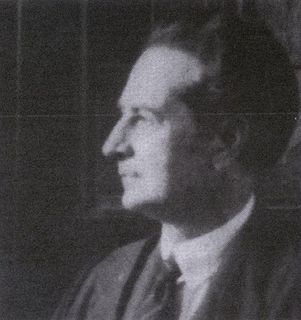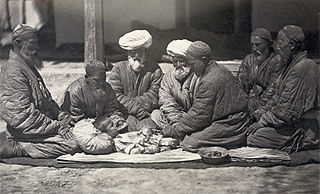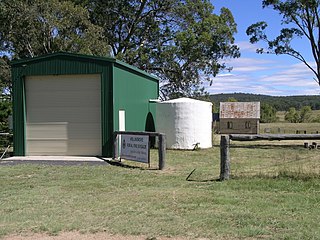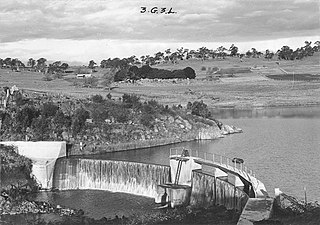Society
The Ngarabal were closely related to the Jukambal, and it is possible that they may have constituted a western group of hordes of the latter, though authorities like A. Radcliffe-Brown have stated that they formed a distinct tribal unit.
The Jukambal were an indigenous Australian people located in northern New South Wales, Australia.
A band society, sometimes called a camp or, in older usage, a horde, is the simplest form of human society. A band generally consists of a small kin group, no larger than an extended family or clan. The general consensus of modern anthropology sees the average number of members of a social band at the simplest level of foraging societies with generally a maximum size of 30 to 50 people.

Alfred Reginald Radcliffe-Brown, FBA was an English social anthropologist who developed the theory of structural functionalism and coadaptation.
Neither circumcision nor subincision were practiced by the Ngarabal. Nose piercing was equally unknown, as was tooth evulsion. Scarification however was practiced for ornamental ends, among both men and women, but was optional.

Circumcision is the removal of the foreskin from the human penis. In the most common procedure, the foreskin is opened, adhesions are removed, and the foreskin is separated from the glans. After that, a circumcision device may be placed, and then the foreskin is cut off. Topical or locally injected anesthesia is sometimes used to reduce pain and physiologic stress. For adults and children, general anesthesia is an option, and the procedure may be performed without a specialized circumcision device. The procedure is most often an elective surgery performed on babies and children, for religious or cultural reasons. In other cases it may be done as a treatment for certain medical conditions or for preventative reasons. Medically it is a treatment option for problematic cases of phimosis, balanoposthitis that does not resolve with other treatments, and chronic urinary tract infections (UTIs). It is contraindicated in cases of certain genital structure abnormalities or poor general health.

Nose piercing is the piercing of the skin or cartilage which forms any part of the nose, normally for the purpose of wearing jewelry, called a nose-jewel. Among the different varieties of nose piercings, the nostril piercing is the most common. Nose piercing is the third most common variety of piercing after earlobe piercing and tongue piercing.

Scarifying involves scratching, etching, burning / branding, or superficially cutting designs, pictures, or words into the skin as a permanent body modification. In the process of body scarification, scars are formed by cutting or branding the skin by varying methods, to purposely influence wound healing to scar more and not scar less. Scarification is sometimes called cicatrization.
Medicine
A species of angophora apple tree, tapped for its tannin-rich kino, formed part of the Ngarabul pharmacopoeia. The gum of Eucalyptus robusta, yarra was also used medicinally. The leaves of the Manna Gum,, horra, were used to treat ophthalmic maladies such as narrada mil (bad eye). In terms of internal medicine, their properties were used in cases of diarrhoea, something MacPherson observed as working when he applied the remedy to a pet opossum suffering from loose bowels. Two curative functions were thought to be derived from the fat of the carpet snakes, as an emollient for burns, and as an embrocation for rheumatism.
In the Ngarrabul tribe an eagle-hawk's feather was placed over the soft tissue of wounds, and this was in turn then covered with tea tree bark. Both were then bandaged up with a kangaroo skin to ensure a poultice-like warmth. As with other tribes, like the Jukambal, various species of Melaleuca, Callistemon and Leptospermum were stripped of bark to set bones: the bark was used inside-out, the bones were set or immobilized by the inner layers, the softer outside layers served as padding.
Snake-bites were treated by cutting the skin around the fanged flesh, and then several medicine men would suck the venom in turns. The "soldier bird" (bri-prri) was much prized for its habit of kicking up a din whenever snakes were nearby. [lower-alpha 2]
Recent activities
In 1987, the Glen Innes Aboriginal Land Council purchased The Willows in 1987 with the assistance of New South Wales Aboriginal Land Council. Subsequently, 3 adjacent properties- Rosemont, Canoon and Boorabee, were added to the site as part of an indigenous protected area.
9 sites of Ngarabal cultural important have been identified in this area, now known as the Willows and Boorabee, which, since 2010, is classified under IUCN Category VI regulations and managed as a protected area where sustainable use of its natural resources is permitted. Ngarabal people may continue to harvest witchetty grubs, black orchids [12] and mookrum berries.
This page is based on this
Wikipedia article Text is available under the
CC BY-SA 4.0 license; additional terms may apply.
Images, videos and audio are available under their respective licenses.
The Bigambul people are an indigenous people of Australia of the Northern Tablelands and Border Rivers regions of New South Wales and Queensland.

Glen Innes Severn is a local government area in the New England region of New South Wales, Australia. The council serves an area of 5,487 square kilometres (2,119 sq mi) and is located adjacent to the New England Highway. The council was formed by the amalgamation of Severn Shire and Glen Innes City Council.

Emmaville is a village on the Northern Tablelands in the New England region of New South Wales, Australia. It is in the Glen Innes Severn Council district.

Deepwater is a parish and village 40 kilometres north of Glen Innes on the Northern Tablelands, New South Wales, Australia. At the 2006 census, Deepwater had a population of 307, with 489 people in the area.
Marbal (Marbul) is a dialect of the Yugambal language that was spoken around Tenterfield in northern New England, Australia.
The Anēwan, also written Anaiwan/Anaywan, are the traditional owners of the land around Armidale and the New England tableland in New South Wales.
The Barindji, also written Parrintyi, are an indigenous Australian people of the state of New South Wales. They are to be neatly distinguished from the Paaruntyi, who spoke a similar language but whom they called the spitting people.
The Mutumui were an indigenous Australian people of northern Queensland.
The Walmbaria are an indigenous Australian people of Cape York Peninsula in northern Queensland.
The Geynyon, also written Keinjan, are an indigenous Australian people of southern Queensland.
The Banbai are an Indigenous Australian people of New South Wales.
The Kwiambal were an indigenous Australian people of New South Wales.
The Kambuwal were an indigenous Australian people of the state of Queensland.
The Jeithi were an indigenous Australian people of the state of New South Wales.
The Weraerai (Wirraayaraay) were an indigenous Australian people of the state of New South Wales. They are to be distinguished from the Ualarai.

Glen Innes Showground is a heritage-listed showground at Bourke Street, Glen Innes, Glen Innes Severn, New South Wales, Australia. It was designed by various architects, including Thompson and Holmes, J. P. O'Connor, Rowland Bros and Madigan and Cusick. It was built from 1873 by various builders, including A. W. Lane, G. Cooper and H. A. Tutt and Son. It was added to the New South Wales State Heritage Register on 4 September 2015.










